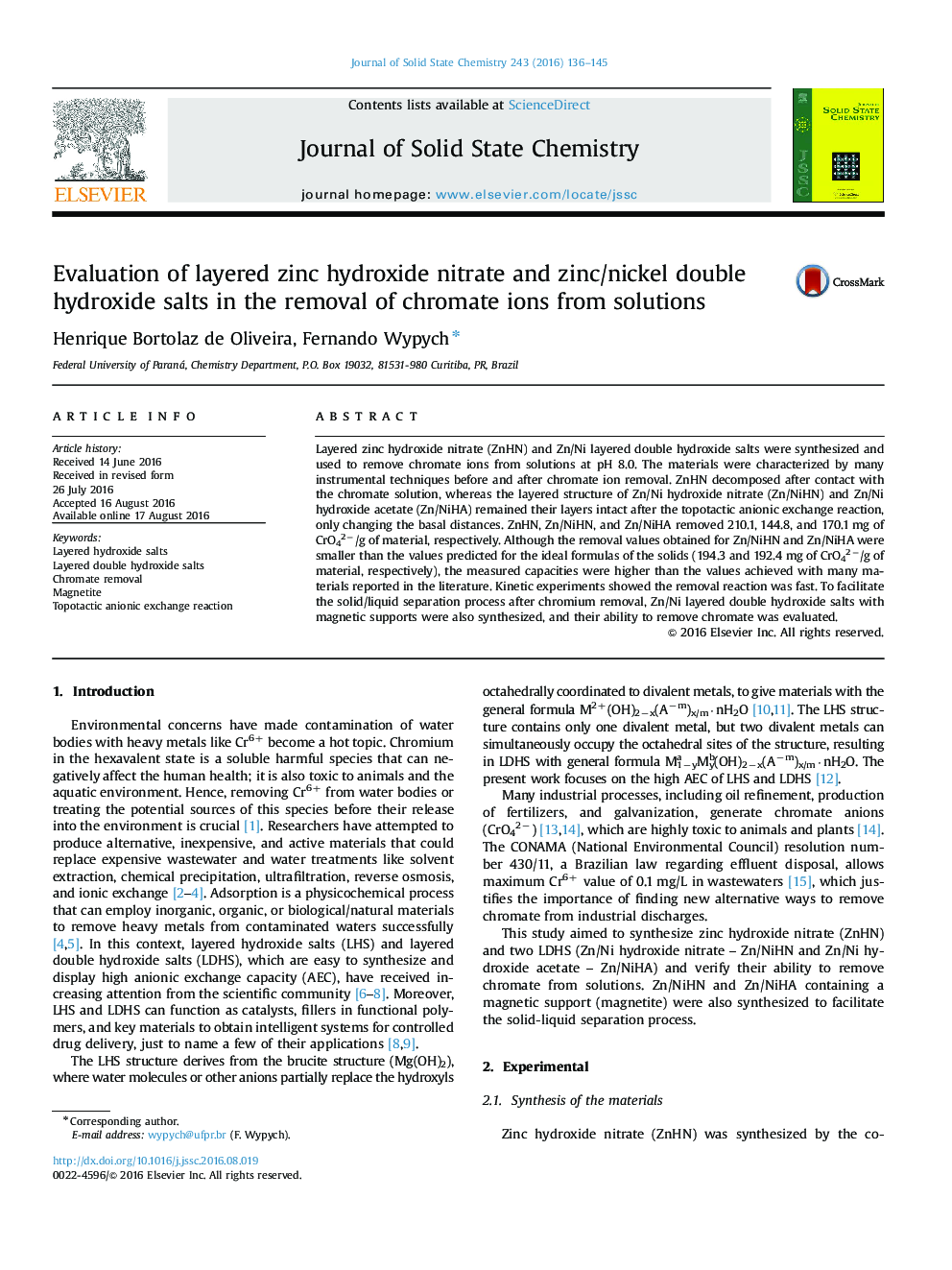| Article ID | Journal | Published Year | Pages | File Type |
|---|---|---|---|---|
| 1329407 | Journal of Solid State Chemistry | 2016 | 10 Pages |
•Zinc hydroxide nitrate and Zn/Ni hydroxide nitrate or acetate were synthesized.•The interlayer anions were replaced by chromate anions at pH=8.0.•Only Zn/Ni hydroxide nitrate or acetate have the structure preserved after exchange.•Fast exchange reaction and high capacity of chromate removal were observed.•Magnetic materials were obtained to facilitate the solids removal the from solutions.
Layered zinc hydroxide nitrate (ZnHN) and Zn/Ni layered double hydroxide salts were synthesized and used to remove chromate ions from solutions at pH 8.0. The materials were characterized by many instrumental techniques before and after chromate ion removal. ZnHN decomposed after contact with the chromate solution, whereas the layered structure of Zn/Ni hydroxide nitrate (Zn/NiHN) and Zn/Ni hydroxide acetate (Zn/NiHA) remained their layers intact after the topotactic anionic exchange reaction, only changing the basal distances. ZnHN, Zn/NiHN, and Zn/NiHA removed 210.1, 144.8, and 170.1 mg of CrO42−/g of material, respectively. Although the removal values obtained for Zn/NiHN and Zn/NiHA were smaller than the values predicted for the ideal formulas of the solids (194.3 and 192.4 mg of CrO42−/g of material, respectively), the measured capacities were higher than the values achieved with many materials reported in the literature. Kinetic experiments showed the removal reaction was fast. To facilitate the solid/liquid separation process after chromium removal, Zn/Ni layered double hydroxide salts with magnetic supports were also synthesized, and their ability to remove chromate was evaluated.
Graphical abstractFigure optionsDownload full-size imageDownload as PowerPoint slide
